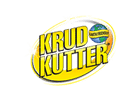By Janice Ramos
Search habits are changing. Rapidly. The way your prospects search for solutions, ask questions, and make purchase decisions is no longer linear, and what worked yesterday might already be outdated today. That’s why evolving search intent has become a critical consideration for any company looking to stay visible, relevant, and competitive in the search engine results.
In this post, we’ll explore how you can better understand evolving search intent and align your content strategy accordingly to drive higher quality traffic and conversions, without wasting valuable marketing dollars.
What Is Evolving Search Intent?
Search intent refers to the purpose behind a user’s search query. Are they looking to learn something (informational), compare solutions (navigational/commercial), or make a purchase (transactional)? While intent categories are still relevant, evolving search intent highlights the dynamic nature of how these intentions shift based on behavior, industry trends, algorithm changes, and technology (like voice search and AI).
For example, a query like “best CRM software” might have once implied a user was ready to buy. Today, that same query could signal the start of a research journey, meaning the user is far from converting.
Recognizing these changes, and adapting your strategy to meet them, is where the opportunity lies.
Why B2B Leaders Must Prioritize Evolving Search Intent
For B2B service companies, especially those looking to reduce reliance on referrals and scale with predictability, aligning with evolving search intent is essential.
Here’s why:
- Higher quality traffic: Meeting the user where they are in their journey increases the likelihood that your content answers their needs, and drives action.
- Improved lead qualification: By mapping content to various intent stages, you attract prospects that are closer to being a good fit.
- Smarter SEO investments: Instead of optimizing for outdated or irrelevant terms, you focus on keywords that reflect real user behavior now.
- Better ROI tracking: When content aligns with intent, conversion metrics become more meaningful and easier to attribute.
How to Align Content with Evolving Search Intent
Let’s break it down into a few practical steps you can start using now.
Reassess Keyword Intent Regularly
Use tools like Google Search Console, Ahrefs, or SEMrush to analyze which keywords are bringing traffic to your site—and what the users actually want when they search for them.
Are people landing on your services page when they really want a how-to guide? That mismatch means it’s time to update or restructure your content.
Build Content Funnels Based on Intent
Organize your content strategy into top, middle, and bottom of funnel, each mapped to a specific intent:
- Top of funnel (TOFU): Informational blog posts, checklists, “what is…” content
- Middle of funnel (MOFU): Case studies, comparison guides, webinar recaps
- Bottom of funnel (BOFU): Demo pages, testimonials, ROI-focused service pages
This layered approach ensures you’re engaging users at every stage of their decision-making journey.
Update Existing Pages with Intent in Mind
A page that ranked well in 2021 may not meet today’s intent expectations. Run an audit of your top pages and ask:
- Is the content outdated?
- Is it aligned with how users currently search?
- Does it match their next logical step?
A light refresh that realigns with evolving search intent can dramatically improve rankings and conversions.
Leverage FAQs and Schema Markup
Google increasingly favors content that answers specific questions. Adding FAQs tailored to new search patterns, and using schema markup, can improve your chances of earning featured snippets or People Also Ask placements.
Track, Test, and Adjust
This isn’t a one-and-done process. Intent will keep evolving. Set up regular reporting (monthly or quarterly) to monitor changes in search behavior and make strategic adjustments to your content accordingly.
Let Intent Guide Your Growth
Evolving search intent is more than just an SEO buzzword, it’s a window into your customer’s mindset. For CEOs looking to improve lead quality, reduce wasted ad spend, and build a scalable growth engine, adapting to these intent shifts is no longer optional, it’s a competitive necessity.
When your content strategy evolves with your audience’s intent, you win. Every. Single. Time.
Ready to Optimize Your Content for Evolving Intent?
DoubleDome Digital Marketing specializes in helping growth-focused businesses like yours rank higher, convert better, and scale smarter with SEO strategies tailored to real user behavior—not outdated keyword checklists.
Let’s align your SEO strategy with your ideal buyer’s journey. Contact DoubleDome Digital Marketing today to schedule your strategy call.









